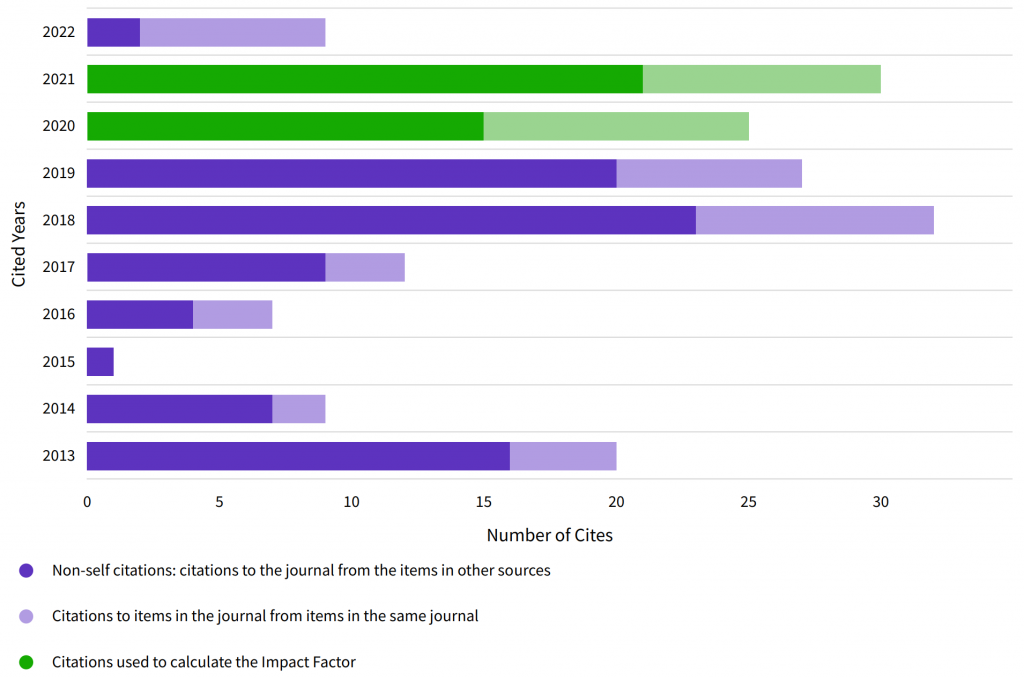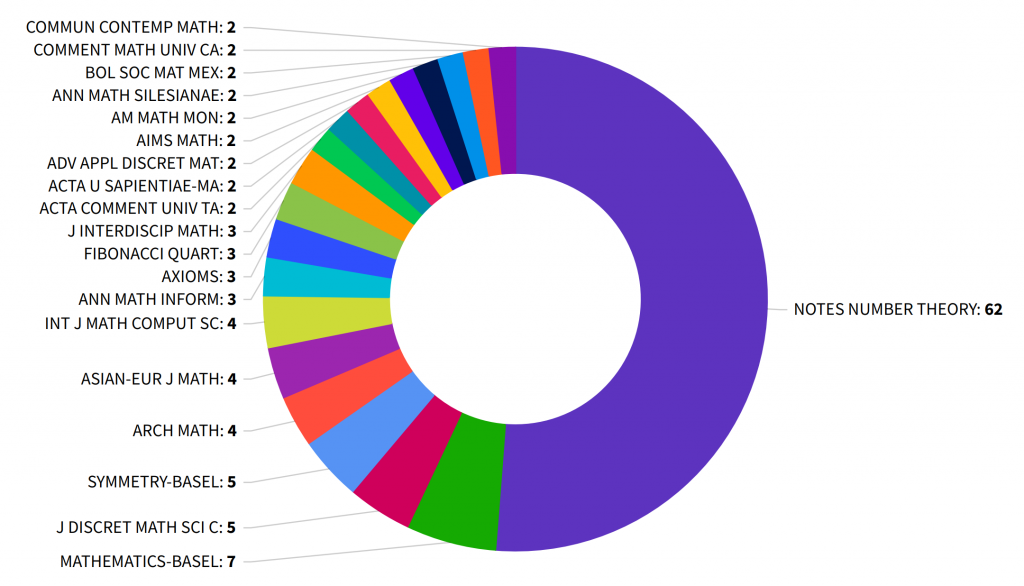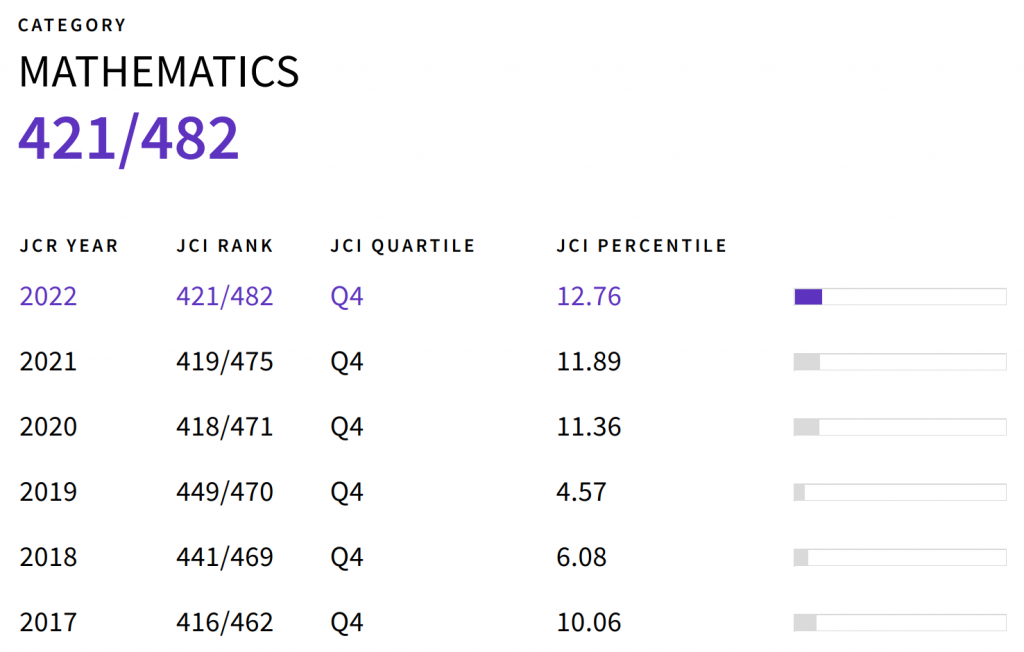The Editorial Office of International Journal “Notes on Number Theory and Discrete Mathematics” is excited to announce that in July 2023, for the first time in the NNTDM’s history, the Journal was assigned with a Journal Impact Factor, and its value for the past full year 2022 is 0.3.
This is the result of Clarivate™ Journal Citation Reports™ announced extension to all Web of Science Core Collection™ journals, including those indexed in the multidisciplinary Emerging Sources Citation Index™ (ESCI), which NNTDM has been part of since the year 2017.
It is worth noting though that while journals indexed in ESCI are receiving a Journal Impact Factor for the first time in June 2023, they will not receive ranks, quartiles, or percentiles until the release of 2023 data in June 2024. According to the alternative indicator maintained by Clarivate, Journal Citation Indicator, NNTDM ranks in Q4 in Category “Mathematics”.
Among the key indicators in the Journalʼs Performance report for NNTDM are the following:
-
- Journal Impact Factor (JIF) for 2022: 0.3
- Journal Impact Factor without Self-Citations for 2022: 0.2
- 5-Year Impact Factor for 2022: 0.4 (More info)The 5-year Impact Factor is the average number of times articles from the journal published in the past five years have been cited in the JCR year. It is calculated by dividing the number of citations in the JCR year by the total number of articles published in the five previous years.
- Journal Citation Indicator (JCI): 0.33 (More info)The Journal Citation Indicator (JCI) is the average Category Normalized Citation Impact (CNCI) of citable items (articles & reviews) published by a journal over a recent three year period. The average JCI in a category is 1. Journals with a JCI of 1.5 have 50% more citation impact than the average in that category. It may be used alongside other metrics to help you evaluate journals.

- Cited Half-life: 4.2 years (More info)The Cited Half-Life is the median age of the items in this journal that were cited in the JCR year. Half of a journal’s cited items were published more recently than the cited half-life.

- Citing Half-life: 14.3 years (More info)The Citing Half-Life is the median age of items in other publications cited by this journal in the JCR year.
- Open Access: 95.31% of the Journal content is regarded as Gold Open Access. (More info)Gold open access means the publisher is responsible for making the published academic material freely available online. Gold open access papers mean that the Version of Record is published and made freely available online. A key benefit of Gold open access publishing is that authors retain copyright over their work under a Creative Commons licence. The full, unrestricted reuse of published work, providing the original author is cited, is allowed with Gold OA.
- Top 20 journals citing NNTDM:

We use the opportunity to thank all our Editorial Board members, voluntary reviewers, authors and readers, without whose constant high quality work and dedication the Journal would not have been able to achieve this long deserved recognition.
Further reads:



